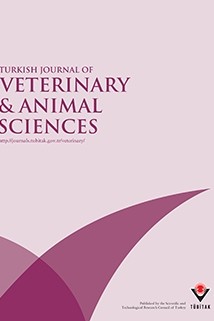
Turkish Journal of Veterinary and Animal Sciences
Yazarlar: Ali Reza KHOSRAVI, Hojjatollah SHOKRI, Donya NIKAEIN
Konular:-
DOI:10.3906/tar-1112-48
Anahtar Kelimeler:Key words: Candida zeylanoides,Pathogenicity,Virulence,Mice
Özet: Systemic candidiasis is an opportunistic infection caused by Candida species in animals. The purpose of this study was to evaluate the pathogenicity of different doses of Candida zeylanoides in BALB/c mice. Thirty mice were selected in this study. Different doses of the yeast were intravenously inoculated to the animals. At first, clinical signs and survival time of infected mice were recorded. Then both mycological and histological examinations were performed for detection of Candida in different tissues. The results showed that the injection of 1 × 108 cells of C. zeylanoides caused high mortality (group 1). The mortalities occurred within 7-12 days (mean: 9.5 days) in group 2 (inoculated with 2 × 107 yeast) and 15-25 days (mean: 20 days) in group 3 (inoculated with 1 × 107 yeast cells) after infection. The kidneys had the highest burden of yeasts (6 × 104 CFU/g). The results of histological examination showed masses of round to oval budding yeast cells along with a few pseudohyphae in different tissues. These results provide evidence that the pathogenicity of C. zeylanoides is directly related to the inoculum size of the infecting species, representing the highest yeast burden in the kidneys of the infected BALB/c mice. In order to obtain the exact virulence factors in C. zeylanoides, this study should be continued in the future.